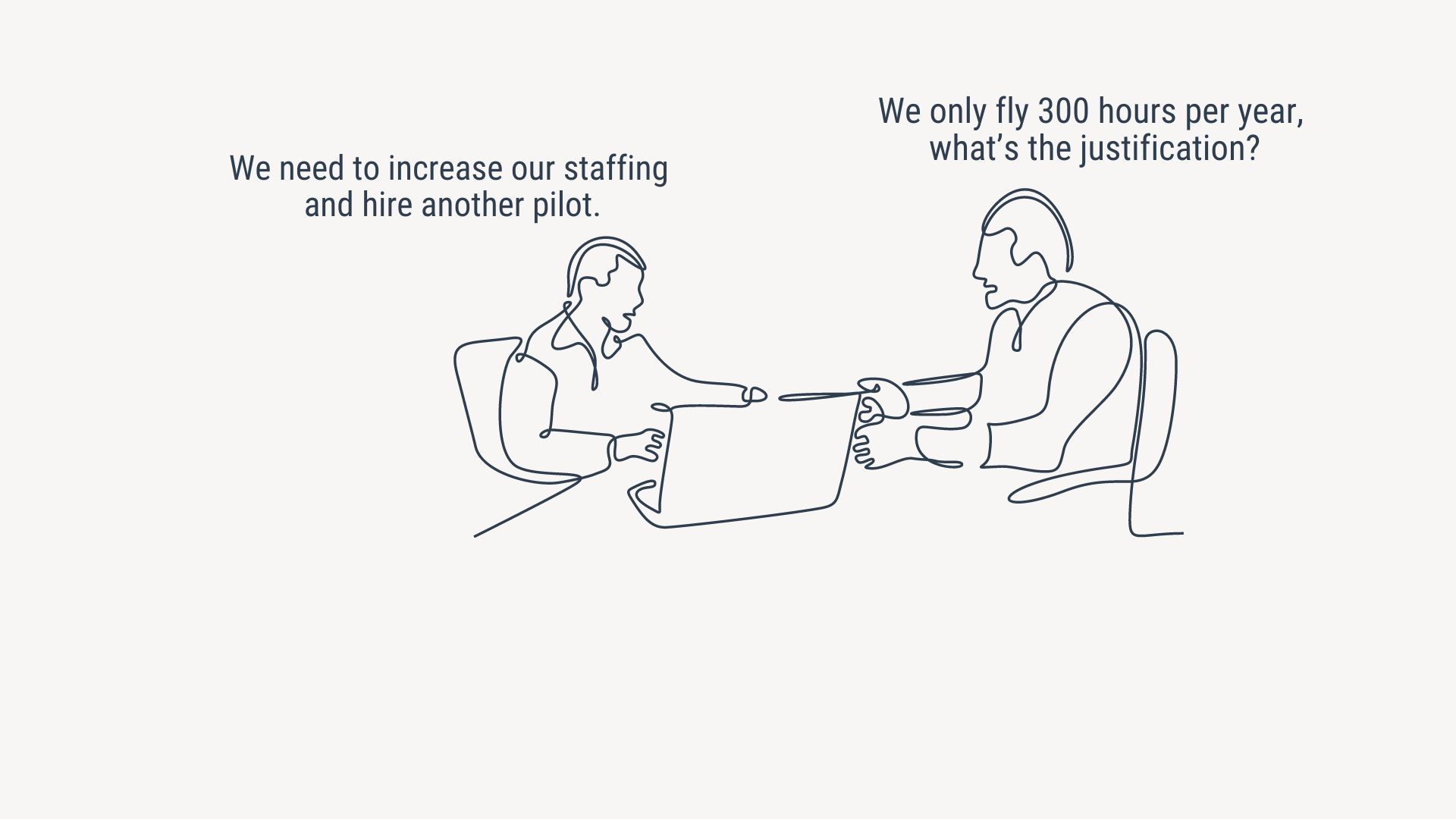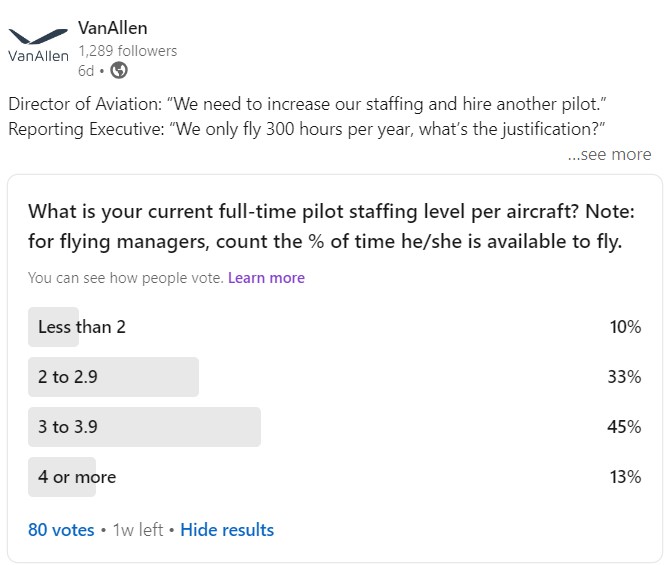

We polled our LinkedIn followers and found nearly 80% of operations staff between 2 and 4 pilots per aircraft; 13% have more than 4. Below, we outline a number of considerations when considering your staffing strategy. Ultimately, pilot staffing levels correlate to aircraft availability and quality of work life; flight hours are an outcome.

How many pilots do we need?
Full-time employee headcount is often a lightning rod in any enterprise. What is the proper staffing level for any part of your organization? Headcount drives expense. And with aviation salaries continuing to increase and the expense of associated training, one additional pilot is a significant investment in your aviation team.
Where do you start? Expected Availability.
The culture of your organization and the expected availability of its aircraft will largely help define your staffing levels. You flew 300 hours last year, but frankly that does not tell you much. More importantly, was your travel relatively predictable? Or did you have numerous “pop-up” trips throughout the year? These aviation assets are purchased to provide flexibility. It boils down to expected availability, not historic or projected demand. For example, the staffing level for an organization that desires availability 365 days a year with 4-hour notice is materially different than an organization that is Monday through Friday with 12-hours notice.
Supply vs. Demand
By answering the first question on expected availability, you have a sense of operational readiness or the demand of your organization. Unfortunately, it does not get easier to calculate the supply of pilots needed to meet this demand. Each pilot has a finite number of days he or she is available each year. Your company policy on vacation/PTO days, training days, and administration days will have an impact. Additionally, your type of operation can also impact staffing inefficiencies – e.g. international flying versus domestic flying.
Other Factors
Beyond the raw calculations above, there are other factors you may want to consider that can impact your staffing levels:
- Flying Manager – Do you have an aviation manager who is also a pilot? Does this individual fly a 100% load or less? To lead the team and operation effectively and proactively, we commonly see flying managers flying less than 50% of their time.
- Contract Pilots – What is your philosophy on the use of contractors? Do your passengers value familiarity with employees? Is there is high need for confidentiality?
And while pilot staffing tends to be the more common topic, don’t forget about technician and scheduler staffing levels to support your expected availability.
Want to learn more about designing your organization for optimum efficiency? Contact VanAllen to learn more about our Organization Assessment services today.
Looking for more information on staffing your aviation team? Check out this video of Don Henderson sharing his insights on risks and challenges when it comes to Aviation Staffing.
